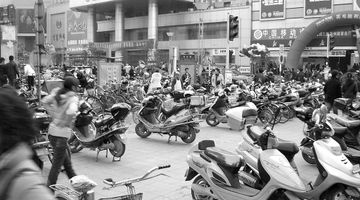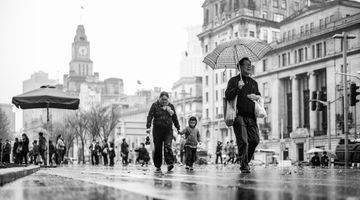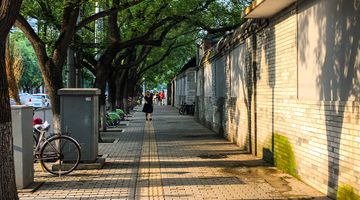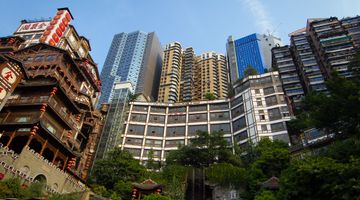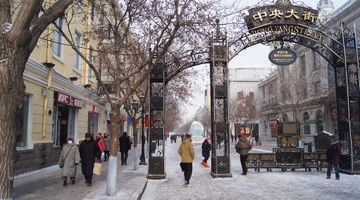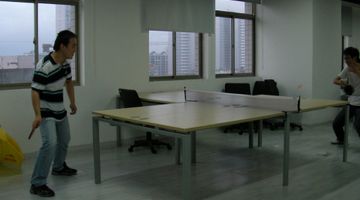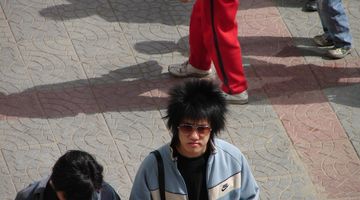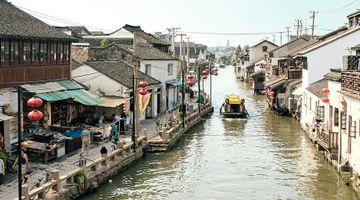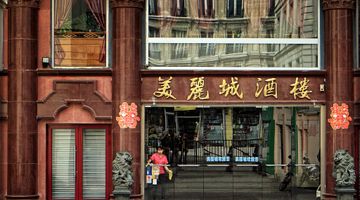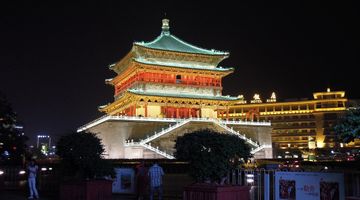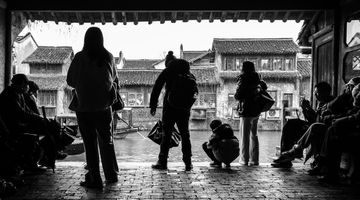Transport in Chinese – How to Get to and Travel Around the Country
China is the world’s fourth largest country and it is located in East Asia bordering 13 countries North Korea, Russia and Mongolia to the north and east. It shares its western border with Kazakhstan, Kyrgyzstan and Tajikistan. While along its southern border are the countries of Pakistan, India, Nepal, Bhutan, Myanmar, Laos and Vietnam. There are three seas off the eastern coast of China, the Yellow Sea, the East China Sea and the South China Sea.
Transport in China – general outline
China has some of the world’s busiest international airports, so getting there is very easy. There are several options for travelling around the country with an excellent network of internal flights, fast express trains and intercity express buses. Within the major cities of China there are metro systems, trams, local commuter trains and private hire cars. All Chinese cities, big and small, have buses, taxis and motorcycles with another fast growing option being app operated bicycles to hire for short journeys across the city.
How to get to China
By air
There are more than thirty international airports within China serving numerous overseas destinations so you can easily fly direct to China from locations in each of the worlds continents.
Beijing’s Capital Airport is the world’s second busiest airport and is the main hub for the national carrier, Air China. A second Beijing international airport is due to open in 2019.
Guangzhou’s Baiyun Airport is the busiest airport in the south of China, the third busiest in the country and is the base for several airlines including Hainan Airlines and China Southern.
Shanghai has two international airports; Hongqiao caters for short haul international flights while Pudong receives mostly long haul flights. Pudong is the third busiest airport in the world and is the hub of China Eastern Airlines and Shanghai Airlines.
While the airports listed above offer the busiest routes into China where you can then take an internal flight closer to your destination some of the direct flights to smaller airports include Paris to Wuhan using Air France, San Francisco to Wuhan (China Southern), Amsterdam to Chengdu (KLM), Paris to Chengdu (Air China), Los Angeles or New York to Chengdu (Hainan Airlines).
Chongqing located in the centre of China has several international flights from destinations such as London, Dubai, Helsinki, New York, Los Angeles, Melbourne, Sydney and Tokyo.
By bus
By bus
There are a few international bus routes that operate into China.
In the northeast you can travel on a luxury bus from Vladivostok in Russia to Harbin, the journey takes around 12 hours and costs CNY500.
In the south there are two options. The bus from Hanoi in Vietnam to Nanning takes around 9 hours and costs CNY200 or you can travel from Vientiane in Laos to the Chinese city of Kunming for CNY540, the bus takes more than 30 hours. Tickets can be bought from the bus station, ideally a day or more before the departure date. Very little information is available in English on these routes.
By ferry
There is a regular (3 times a week) ferry service from Incheon in South Korea to Weihei in China’s Shandong province. The overnight ferry leaves in the late afternoon and arrives around 8am the next morning. A berth in a four bed cabin costs CNY750 and the ferries are operated by Weidong Ferries. The ticket office is inside the No2 ferry terminal in Incheon port. During the summer you will need to book your tickets in advance.
The Shanghai Ferry Company operates a service from Osaka in Japan to Shanghai, it leaves on a Friday lunchtime and arrives 48 hours later, and the cheapest ticket is around CNY1000.
By train
A famous train route is on the Trans Siberian Railway from Moscow to Beijing, it takes 7 nights of traveling and costs from CNY1500. Two route options are available, through Mongolia or through Manchuria.
There are two trains each week between Astana in Kazakhstan and Urumqi in the north west of China. They depart on Saturday and Monday afternoons and take around 30 hours this is allowing up to 4 hours at the border crossing point. The cheapest tickets are CNY1200 and can be bought online through Real Russia.
Trains from Hanoi in Vietnam to Nanning in China operate daily with an overnight service costing CNY248. There is a service from Hanoi to Kunming, but it is a little complicated. The first train to the border costs from CNY40 for a seat, you then take a taxi to the actual border. Once into China another taxi to the train station then the train to Kunming takes between 5 and 8 hours costing CNY70.5 for a seat or CNY182 for a sleeper.
How to get around the country
China has a very extensive and affordable transport system allowing for efficient and cheap travel to all regions of the country. There are currently 25 airlines licensed to operate domestic flights in China, with another 22 licensed for domestic and international flights. The rail network is among the best in the world and continually being expanded. Express buses are operated by large companies running a fleet of vehicles down to operators with just the one bus.
By air
There are currently more than 200 airports operating international and domestic services in China, there are more under construction and by 2020 the figure will be 240, meaning that every corner of the country is suitably covered for air travel. Xinjiang province in the northwest, whilst it is sparsely populated has 19 airports with another 4 currently being constructed. Urumqi’s airport is the 15th busiest in China.
With so many Chinese airlines to choose from the market for domestic flights is very competitive. Some of the leading airlines not already listed include Kunming and Lucky Air, both operating from Kunming International Airport. Okay Airways from Tianjin, Sichuan Airlines from Chengdu and Xiamen Air from Xiamen in Fujian province.
There are eight low-cost airlines operating solely within China, 9 Air, Colorful Guizhou Airlines, China United Airlines, Jiangxi Air, Ruili Airlines, Spring Airlines, Urumqi Air and West Air. They generally operate out of smaller sized airports thus keeping operating costs down while flying popular routes that most of the larger operators do not fly.
By train
China’s railway transportation system is very efficient and used mostly as a cheap option for long distance travel. It has the world’s second longest rail network with over 121,000 km (75,186 miles) of railways. It has the world’s longest network of high-speed railways.
The majority of the railways are in the east of the country where the majority of the population lives. The routes extend into the north east and up to the Russian border. Other routes extend through Gansu province to Xinjiang and the cities of the northwest. The route through Qinghai to Lhasa on the Tibetan Plateau is the highest railway line in the world.
Trains have different levels of comfort with some shorter journeys having only hard seats, longer journeys and the seats are a little more comfortable for journeys of just a few hours. Sleeping berths are hard sleeper or soft sleeper and recommended for any journey over about three hours.
The seats on high speed trains are first class, second class and business class. Business class offers the most leg room, personal space and is by far the most expensive. One effect of the high speed trains is the loss suffered by some short internal flights on once popular airline routes. Any flights less than 500km (300 miles) have largely been killed off by the introduction of high speed railways on routes such as Wuhan to Nanchang, Chengdu to Chongqing or Xian to Zhengzhou.
Train tickets should be bought in advance as trains are often sold out in advance. During peak travel times such as the Spring Festival train travel is chaotic with trains fully booked weeks in advance despite extra services operating. Tickets can be bought online or at the train station. Some hotels will give assistance with buying tickets. You need your passport when buying tickets and when entering the station to catch your train. Several Chinese cities have more than one train station, so ensure you go to the correct one when travelling by train. Wi-Fi is available on most trains and there are electric sockets for recharging your phone.
Express Intercity buses
These buses are very efficient and used mostly on journeys between adjacent cities or where there is no train service. The most popular routes will have buses leaving every 20 or 30 minutes, some will leave when the bus is full. They generally operate a direct non-stop service between two cities with the first bus at about 7am until 5 or 6pm. Some overnight buses on longer routes are sleeper buses, these can be very crowded and not the most comfortable way to travel. Normally buy your ticket at the ticket office just before you travel unless you want to go at a specific time. Express buses are more expensive than trains over the same distance but the bus may be faster depending on the level of traffic. Most buses have Wi-Fi, some have refreshments, and all are non smoking.
You may be approached to travel on an unofficial bus; these are usually parked up outside the bus station and are not regulated. They may be a little cheaper, the quality of the bus may be a cause for concern, and they only leave when the bus is full. Sometimes it is a good option, others not.
How to get around the cities and towns within China
Specific local means of transport
In the smaller cities and towns of China the reliance is on local buses, taxis, motorbike taxis and small shuttle buses. Traditional human powered vehicles such as rickshaws are no longer in use, although they can be seen in some tourist areas such as the Bund in Shanghai where they are used for taking photos of tourists.
Metro and subway systems
China’s urban transportation systems have improved greatly since 1949 and the formation of the People’s Republic of China. The country’s first metro or subway system opened in Beijing in 1969. There are now more than 30 Chinese cities with a metro system including Shanghai which has the worlds largest and busiest subway system. Three of the world’s four largest subway systems are in China. Another 43 cities are awaiting planning permission to begin constructing subway systems.
Bus Rapid Transit, light rail and trams
Bus Rapid Transit or BRT is currently in operation or being introduced into several Chinese cities to make cross city travel a faster experience by running on bus only lanes. Light rail or trams are being re-introduced into several Chinese cities, three tram lines are now in operation in Wuhan with more planned to be constructed.
Local buses
In Beijing there are 876 bus routes operating to all areas of the city, to use the buses it is very easy if you know the bus number you need to use. All the information however including the names of the stops is in Chinese. Write the name of the stop you require onto a piece of paper, local people will more often than not be more than willing to help you. You pay the bus fare when you get on the bus, it is a set fare and you pay the same for a journey of one stop or the complete route. In small cities it is CNY1 or 2, in the larger cities CNY3.
Electric Bicycles
Some cities have banned the use of conventional motorbikes in an effort to reduce pollution levels so this has resulted in the popularity of electric bicycles. China is now the world’s number one producer of electric bicycles. They can be a problem in pedestrian areas as they expect pedestrians to step aside for them.
Bikeshare
Bikesharing has become a major industry in China with thirteen out of fifteen of the world’s biggest bike share programs. The app ‘dockless’ bikes are now in all the major cities as well as several smaller cities. Mobike, has over 100,000 bikes in each major Chinese city. Bluegogo has more than 3 million bikes in operation while Hellobikes politely say the word ‘hello’ whenever you unlock one of their bikes.
Renting vehicles in China
Cars and motorbikes
Visitors to China are not permitted to drive a motor vehicle in the country, if you are in China on an extended stay such as working or studying then you can take a Chinese driving test and get a license. Holders of driving licenses from their home country must take the Chinese driving test, you cannot simply exchange licenses.
Bicycles
You can download an app onto your phone to use the dockless bicycles mentioned earlier in this article. You will need to pay through Alipay, a Chinese online system of banking. Some hotels in China have free bicycles for use, others have rental bikes. In tourist areas such as the West Lake in Hangzhou there are several bike rental companies. You may have to leave your passport with them as a security deposit to ensure you return the bike.
